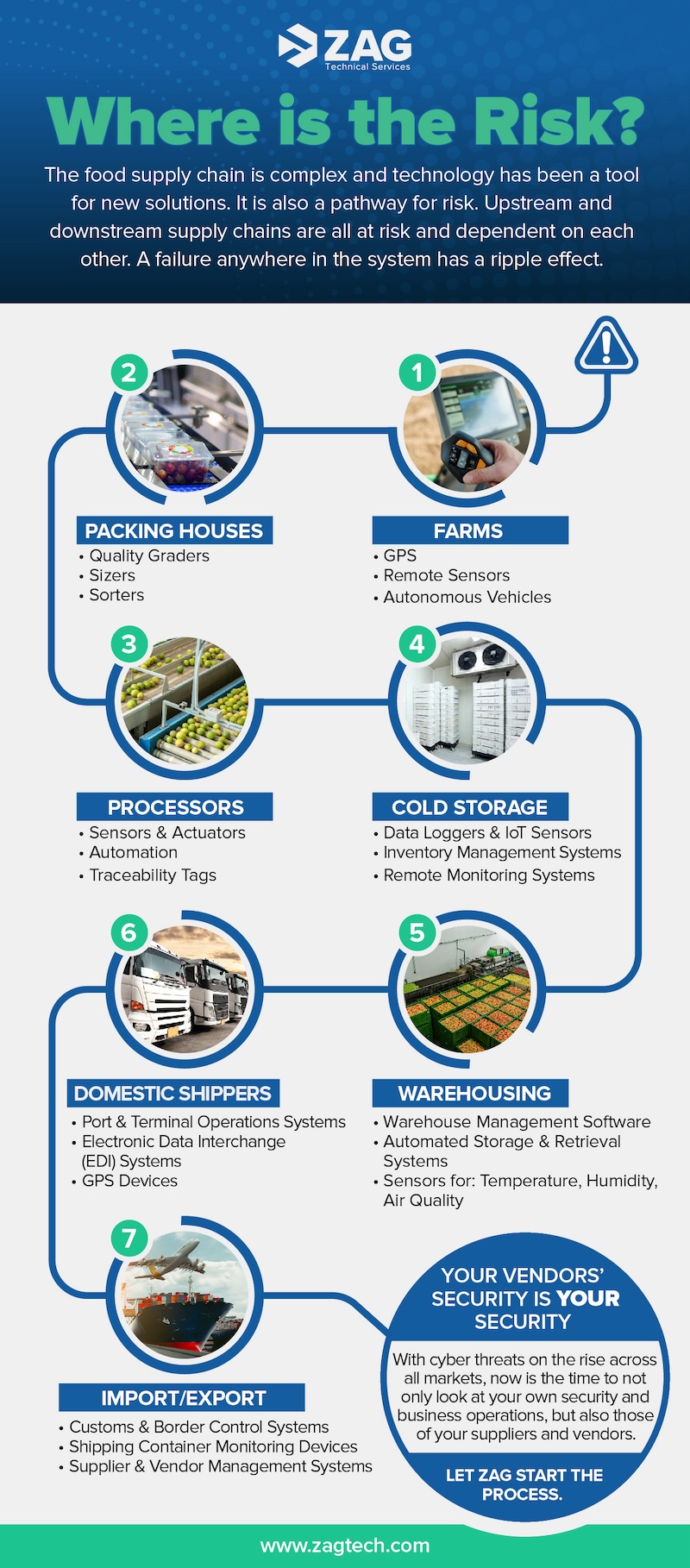Getting food from the farm to the table is complex. Technology is critical in making that happen. However, technology can also create supply chain risk at each stage of that process.
As we’ve seen in multiple cases—like empty supermarket shelves from a ransomware attack shutting down Dole’s North American operations to Americold’s inability to assign trucks to a door—cyber breaches prevented food from reaching consumers’ tables.
In previous blog posts, we’ve discussed the importance of assessing and managing risk. As we move to the next phase of the story, it’s critical to understand how potential cyber threats can affect each stage of the supply chain.
The infographic below highlights segments of the supply chain that consumers rarely see. Each segment can put another at risk, from the packer to the warehouse to logistics and transport.
Upstream and downstream supply chain risk can directly impact your business operations. If a critical port shuts down (which happened in Australia), shipping goods in and out of a country stops. If a ransomware attack disables the world’s largest meat supplier internationally (JBS paid an $11M ransom), then ranchers cannot sell their livestock, and supermarket orders go unfilled.
Learn more about supply chain risk in the infographic below.




